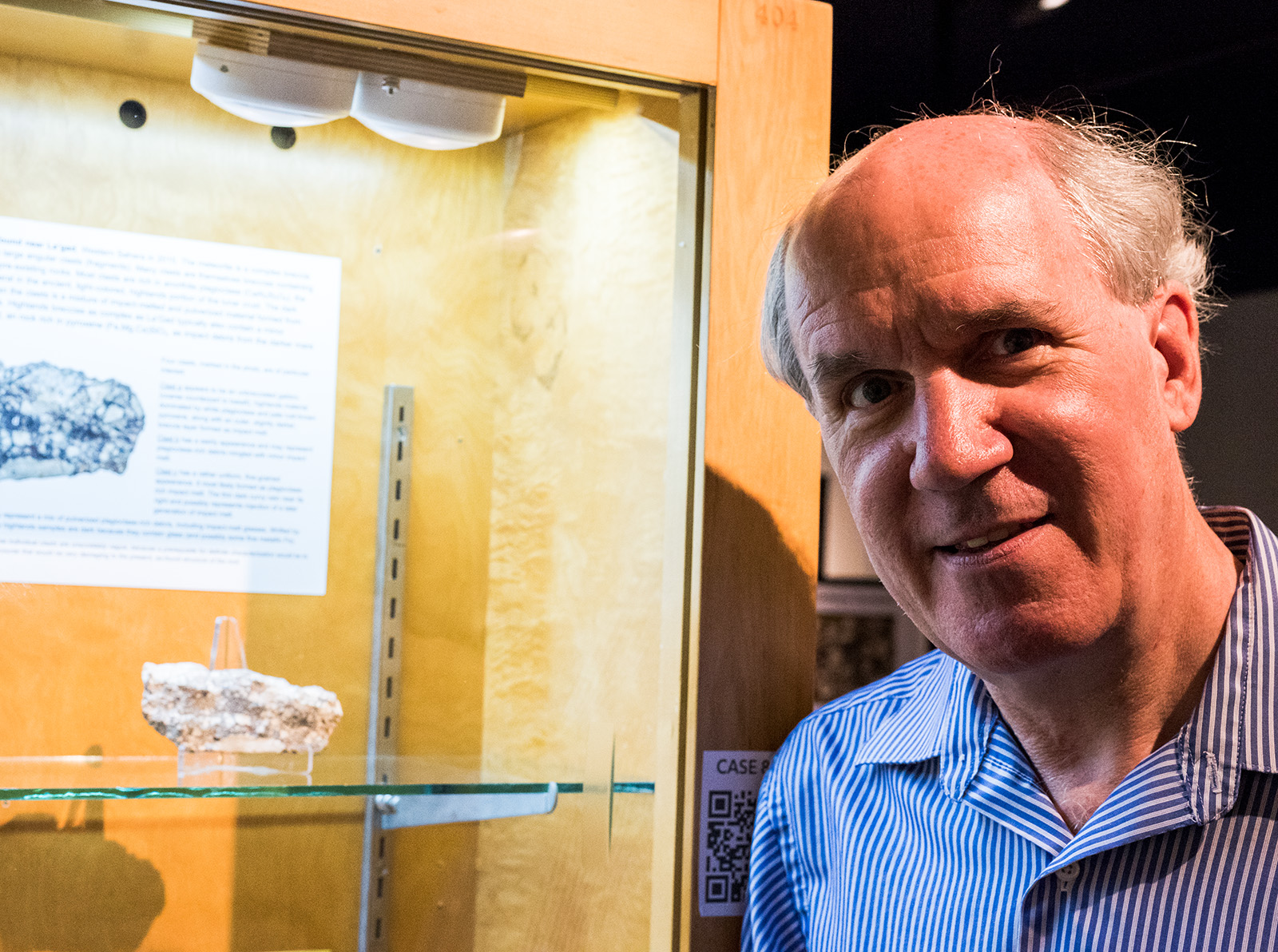Rare lunar meteorite suggests similarities between the moon and Earth

(Joe Akira/Daily Bruin) La’gad, the newest addition to the UCLA meteorite gallery, broke off the moon upon impact from a larger meteorite and landed in the Sahara Desert, where it was discovered in 2015.
By Raymond Le
Feb. 12, 2018 12:06 a.m.
A new addition to UCLA’s meteorite gallery suggests the moon and Earth are made up of similar elements.
The gallery hosted a free public lecture on lunar meteorites Sunday after obtaining a rare lunar meteorite named La’gad, in January. The 185-gram meteorite broke off the moon upon impact from a larger meteorite and landed in the Sahara Desert, where it was discovered in 2015. La’gad is one of the largest and most detailed lunar samples discovered on Earth’s surface, said John Wasson, the UCLA meteorite gallery’s curator and a professor emeritus of geochemistry and chemistry.
On average, 200 grams of lunar material falls onto the earth’s surface every day, most of which are in small pieces in the ocean, said Paul Warren, a researcher in the Institute of Geophysics at UCLA. However, only about 0.2 percent of all falling meteorites are lunar, and no lunar meteorites had been discovered until 1982, he added.
La’gad is composed of materials such as calcium, aluminium, silicon and oxygen, which can provide information about the highlands part of the moon, which make up 83 percent of its surface. It also includes mare basalt and plagioclase, which are visible when light shines through it and are not found in most other lunar meteorites.
Warren said the highlands part of the moon are almost fully composed of solidified lava minerals, and thinks the fact that La’gad is composed of plagioclase suggests the moon was once so hot it had a magma ocean thousands of kilometers deep.
“There’s nothing like this in other meteorites,” he said. “The far side (of the moon) always faces anti-Earth and the near side always faces Earth – without meteorites, we wouldn’t know much about the far side.”
Examining the material that makes up meteorites such as La’gad shows the moon’s composition is more similar to Earth’s than previously thought, Warren said. He added this supports the giant impact theory, which suggests the moon originated from a large rock that broke off from Earth following a large collision.
“Their origins are very closely tied,” Warren said. “So we have this spectacular mini-planet pretty close to home that sends samples every now and then.”


